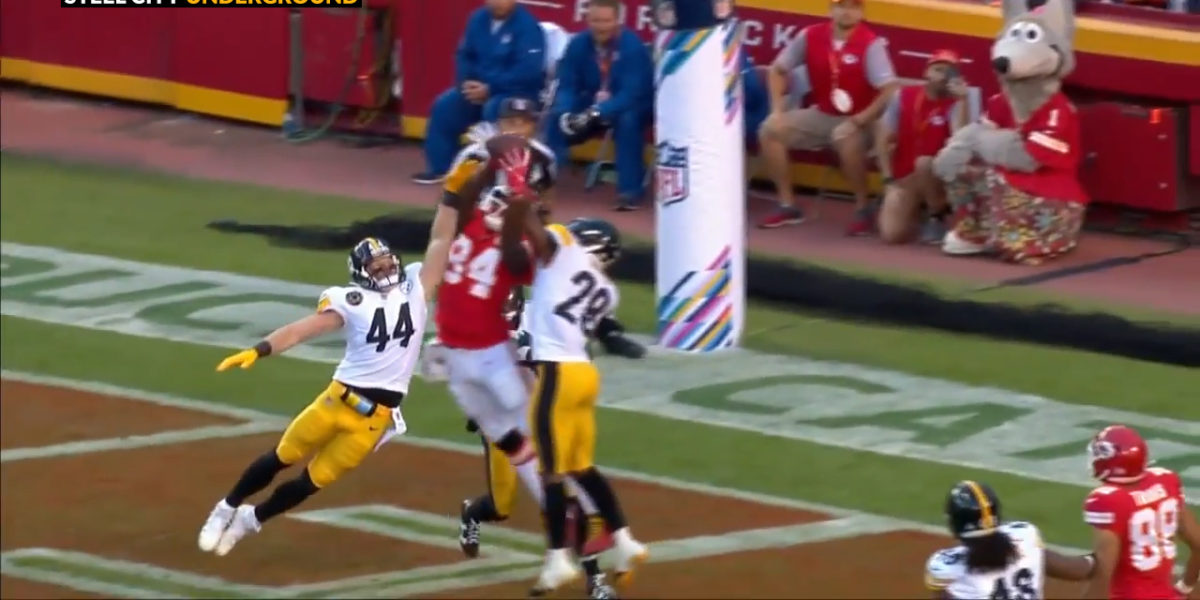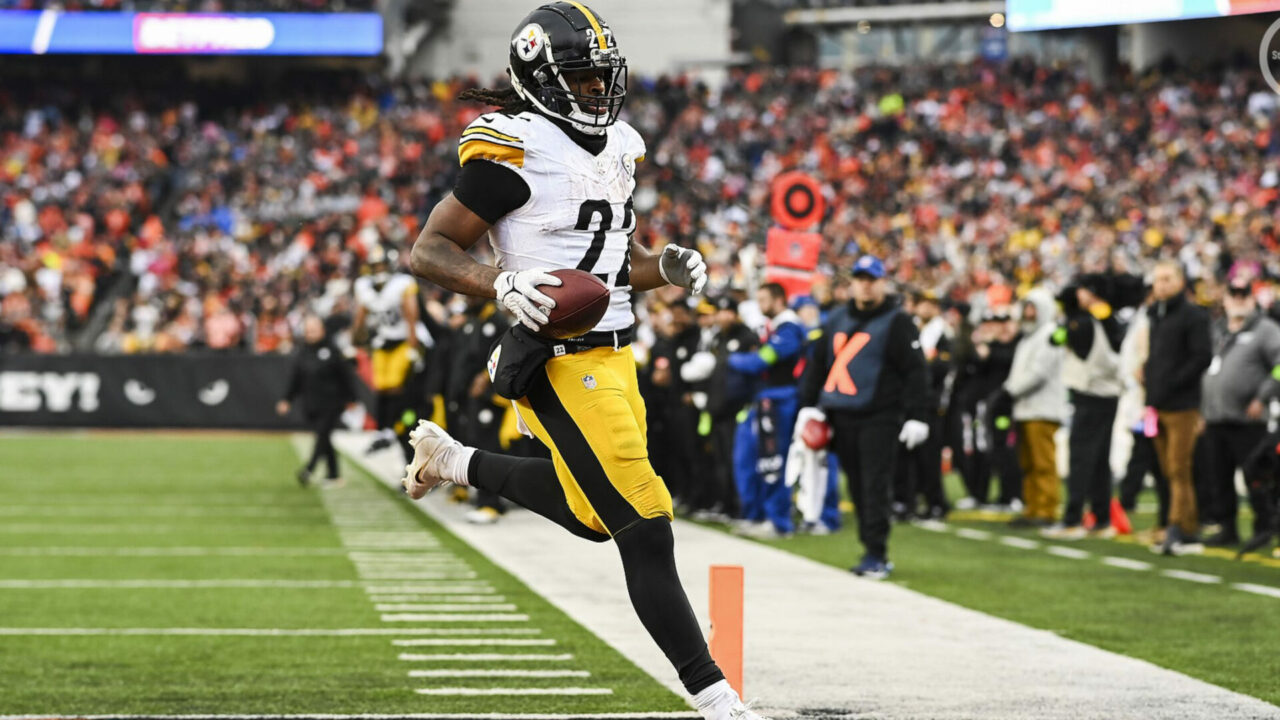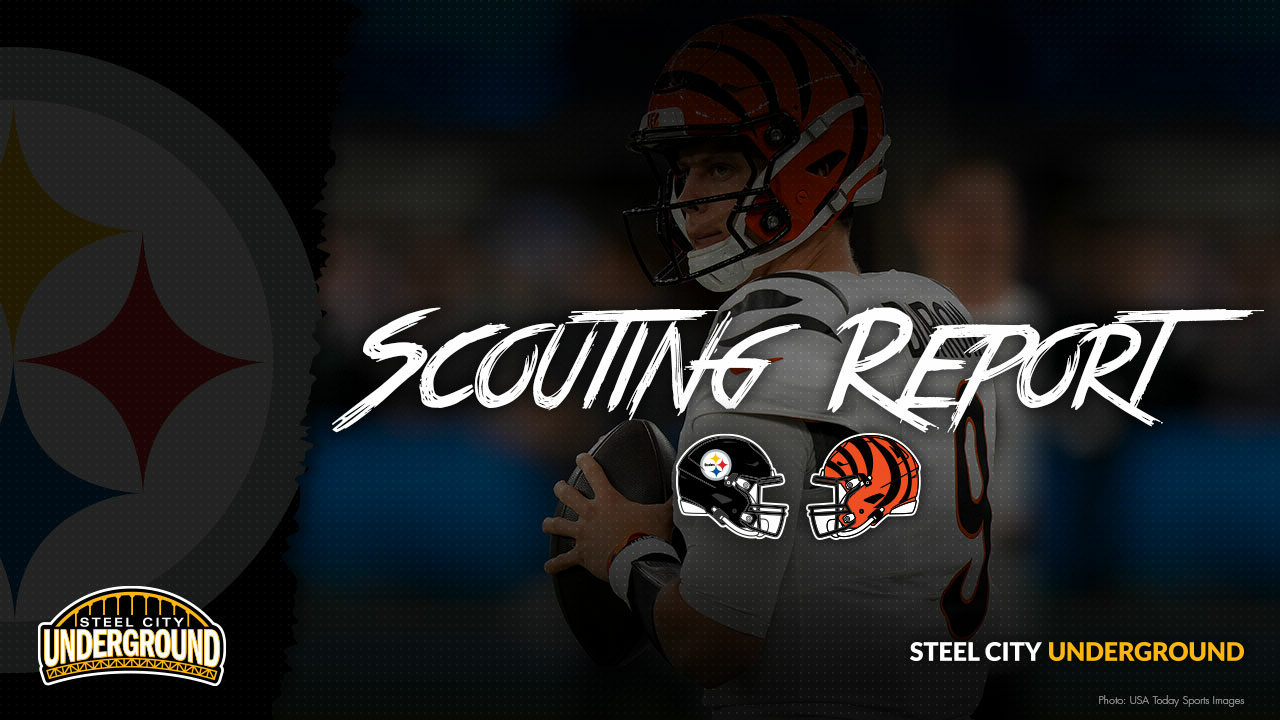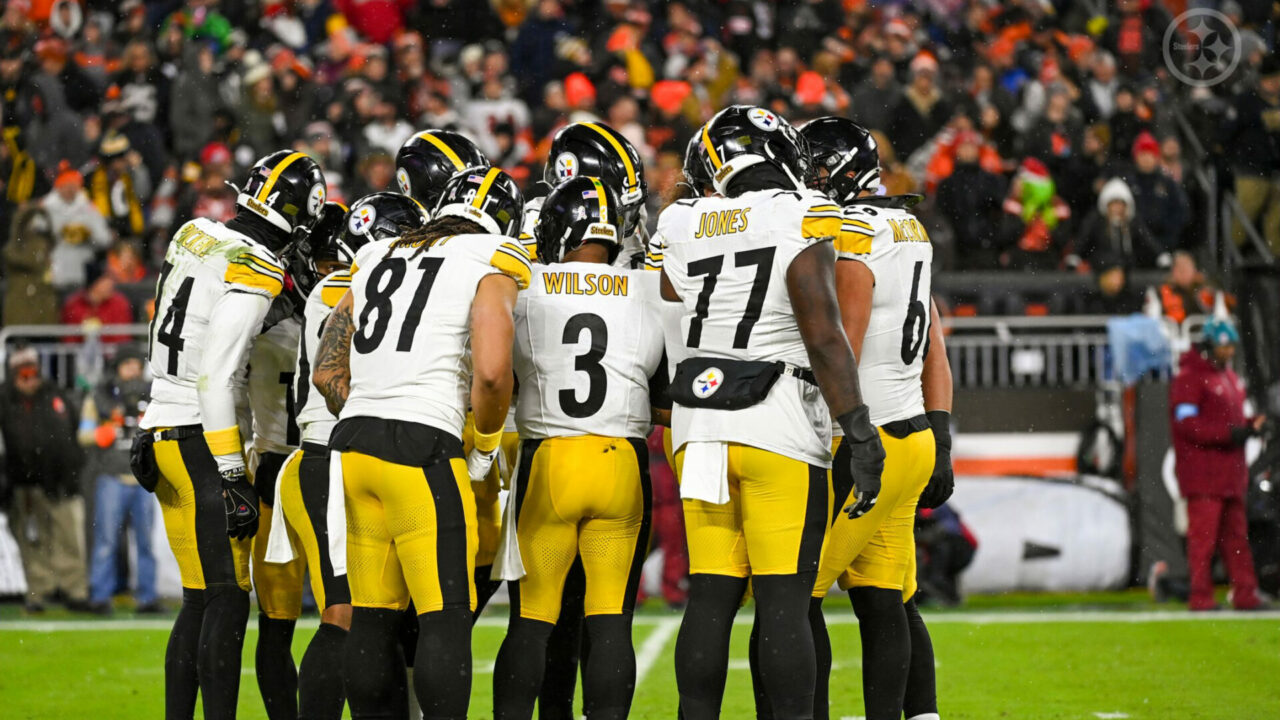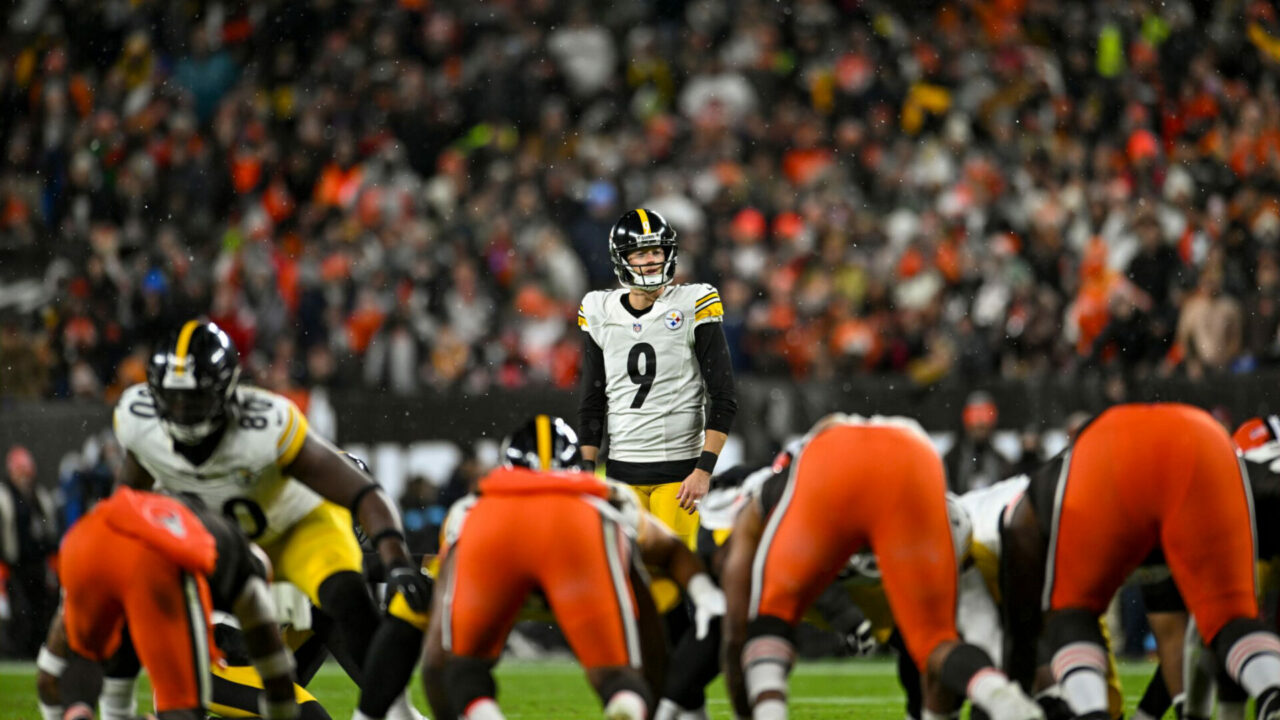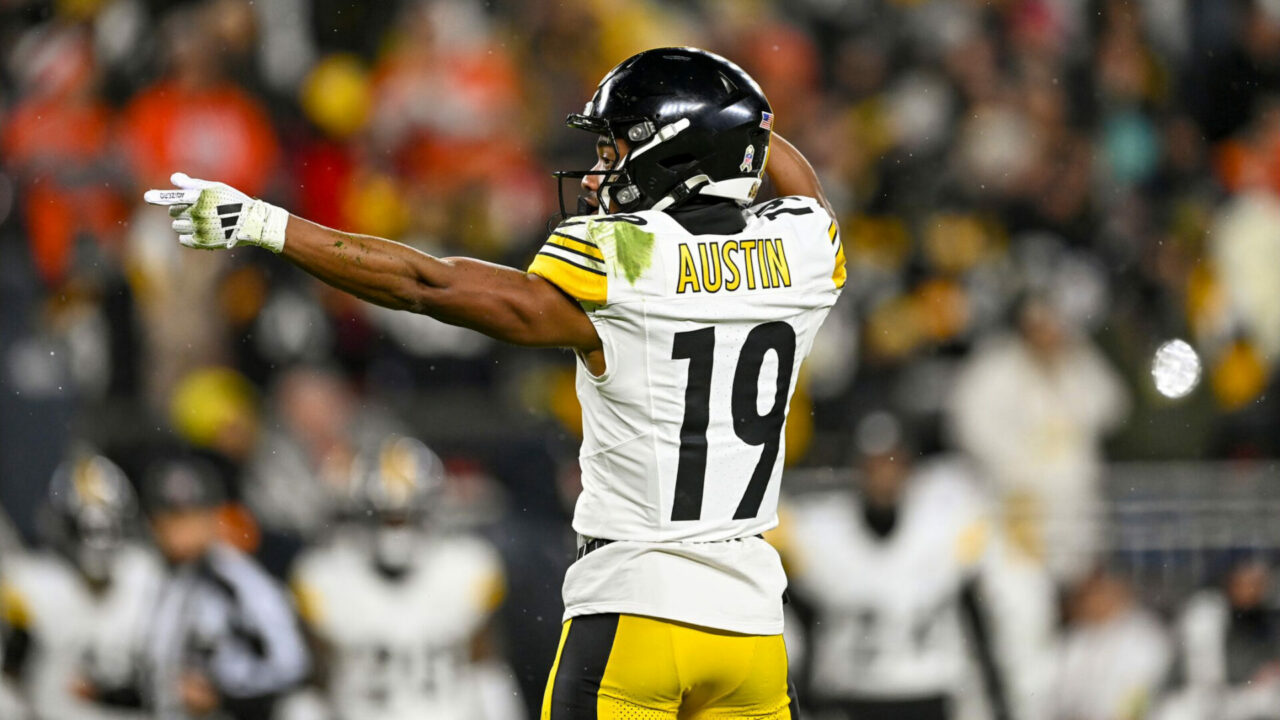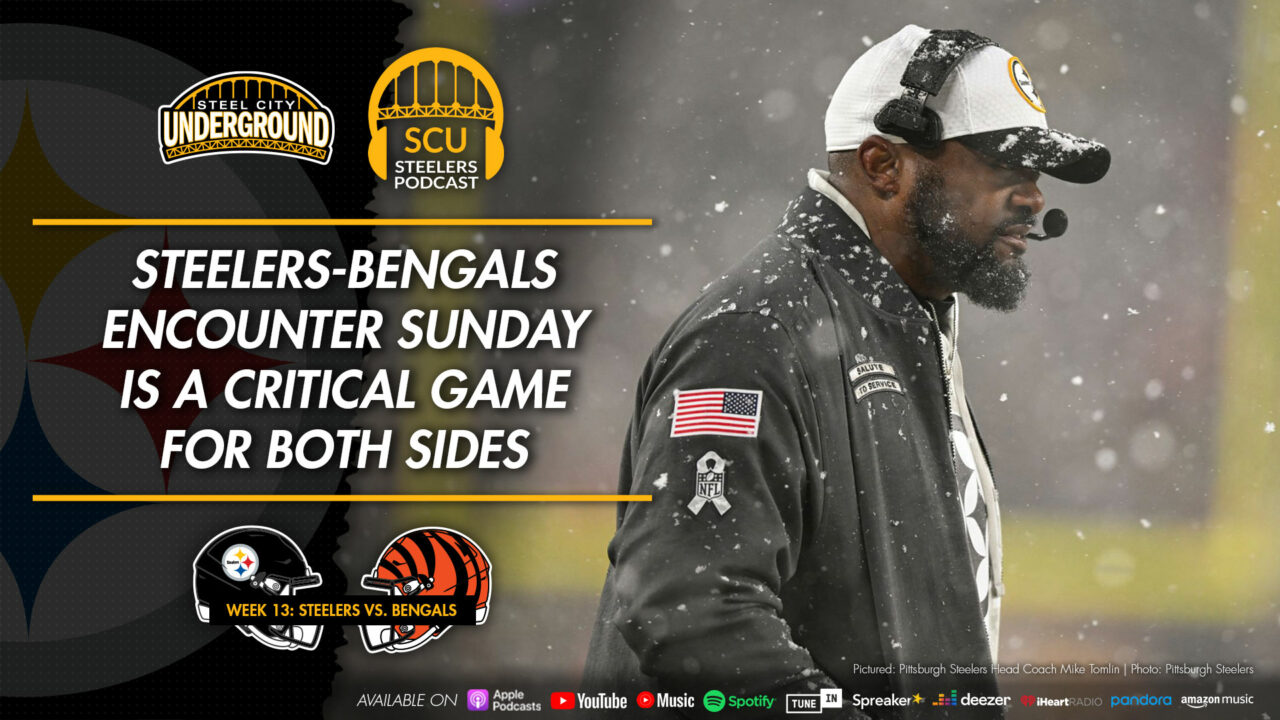You Make The Call: Sean Davis’ near interception
You Make The Call is a weekly feature from Steel City Underground which will challenge fans to examine officiating call(s) made in the previous Pittsburgh Steelers game. The goal is not to whine about calls, as we cannot change them long after the fact! Instead, this column is an opportunity to open discussion where fans can debate on and better educate themselves about the rules of the game.
In the grand scheme of things this call didn’t affect the outcome of the game, however, it falls in line with our last two weeks of “You Make The Call” plays which highlighted the statistical phenomena by which a catch isn’t technically completed and a defender is credited with an interception.
Against the Ravens, we saw Antonio Brown basically stripped of the ball by Baltimore safety Eric Weddle, which was ruled an interception following instant replay. Ryan Shazier made a similar play against a Jacksonville Jaguars tight end a little over a week ago as well.
This week, we’re examining whether or not Steelers safety Sean Davis should’ve been credited with an interception, and subsequently, a touchback. Kansas City decides to go for it on 4th-and-2 from the Steelers four-yard line. Chiefs QB Alex Smith scans the field and fires a pass high for TE Demetrius Harris.
Davis gets a jump on the ball and is fighting with Harris for possession of it as the former goes to the ground.
If you haven’t followed our series over the last few weeks, here’s a refresher on some of the NFL rules, first reviewing Rule 8, Article 3:
A forward pass is complete (by the offense) or intercepted (by the defense) if a player, who is inbounds:
(a) secures control of the ball in his hands or arms prior to the ball touching the ground; and
(b) touches the ground inbounds with both feet or with any part of his body other than his hands; and
(c) maintains control of the ball after (a) and (b) have been fulfilled, until he has the ball long enough to clearly become a runner. A player has the ball long enough to become a runner when, after his second foot is on the ground, he is capable of avoiding or warding off impending contact of an opponent, tucking the ball away, turning up field, or taking additional steps (see 3-2-7-Item 2).
Since Harris does not become a runner, and Davis is going to the ground, so there are additional clauses to the catch rule:
A player is considered to be going to the ground if he does not remain upright long enough to demonstrate that he is clearly a runner. If a player goes to the ground in the act of catching a pass (with or without contact by an opponent), he must maintain control of the ball until after his initial contact with the ground, whether in the field of play or the end zone. If he loses control of the ball, and the ball touches the ground before he regains control, the pass is incomplete. If he regains control prior to the ball touching the ground, the pass is complete.
One more exception to the rule which must be applied here is that of a simultaneous catch:
If a pass is caught simultaneously by two eligible opponents, and both players retain it, the ball belongs to the passers. It is not a simultaneous catch if a player gains control first and an opponent subsequently gains joint control. If the ball is muffed after simultaneous touching by two such players, all the players of the passing team become eligible to catch the loose ball.
As we can see from the clip above, a simultaneous catch should not be ruled, as Harris initially has the ball in his hands, negating the “simultaneous” portion of the rule. Davis then strips the ball from Harris; the ball never touches the ground at this point.
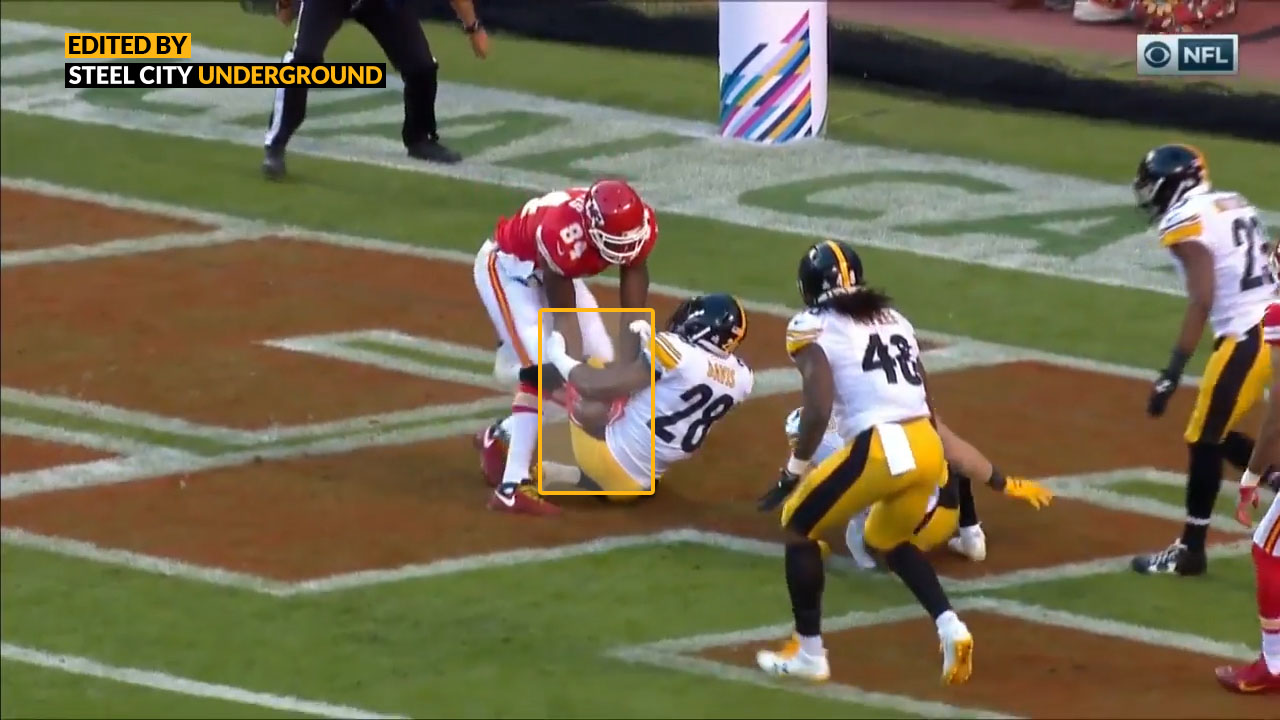
As you watch the clip again, Davis rolls to his right side of his body and then is nearly on his belly as Harris attempts to yank the ball from him. However, Harris pulls Davis up from the ground. It appears, the ball never touches the ground.
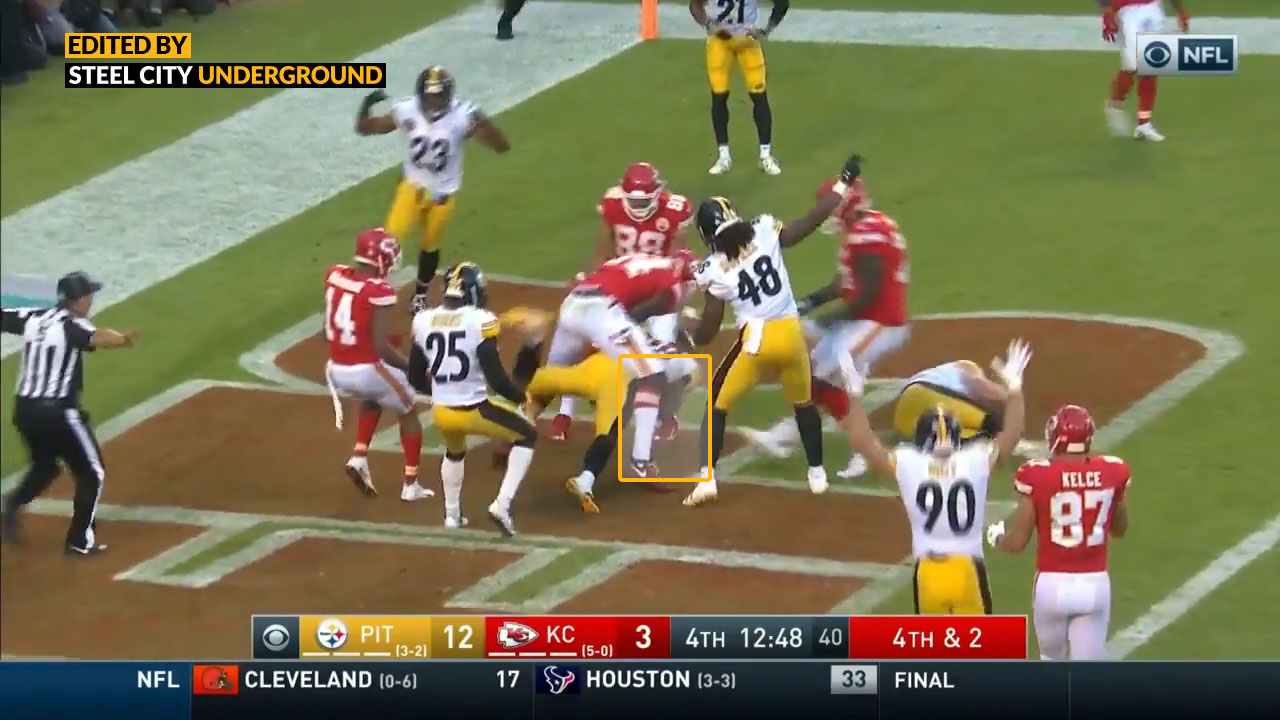
Peter Aiken of Getty Images Sport has the best look of this play as a sideline photographer.
In this still image it appears that you could rule that Davis does not have possession of the ball. However, since Davis is pulled directly up by Harris, does Harris ever release his attempt to contest for the ball? If so, one could argue Davis made an interception. As Davis is dropped, the ball is released and ruled incomplete. (There’s also an angle which is not clear in the replay above, where you cannot tell if the ball is loose as Davis rolls over, as the replay is obstructed by the players’ bodies and Davis’s arm.)
Coach Mike Tomlin was asked about this very play in his postgame press conference:
They said he did not maintain possession of the ball through contact with the ground. I assume that was the explanation. You know it is football.
Did Davis have full possesion of the ball? Should the play have been ruled at touchback?
As mentioned above, ultimately the Steelers received the ball from a turnover on downs. However, an interception would’ve brought the ball back out to the 20-yard line, rather than a change of possession having Pittsburgh’s offense take the field where the Chiefs’ previous line of scrimmage was (the 4-yard line). The difference in field position changes playcalling and also alters the percentage of success to score on the ensuing possession. Since the ball changed hands anyhow, not much was made of it by the players or coaching staff, and a lack of replays followed despite CBS color analyst Tony Romo‘s excitement over wanting to “take a look at that.”
So now my question to Steelers Nation is as follows: is it a catch or an interception? We’ve seen this in previous weeks, so even though the call didn’t have any affect on the outcome of the game, I’m interested in hearing what your thoughts are!
We will add our comments over the next few days too.
